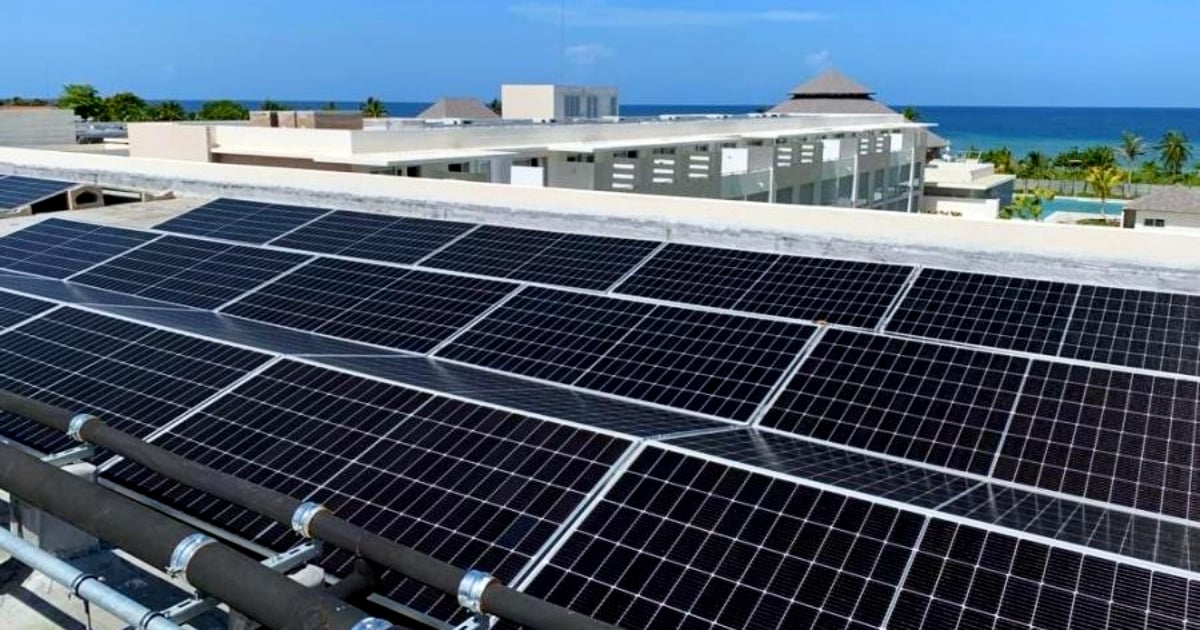
Related videos:
The Cuban government's investment budget for 2025 reflects a partial shift in spending priorities, with a significant increase in renewable energies and debt repayment, while sectors such as tourism continue to receive a considerable portion of resources, far surpassing investment in health and social assistance.
It is important to highlight that the total expenditure of the State projected in the Budgets includes both current expenditures (salaries, subsidies, and services) and investments in infrastructure and productive development.
According to the analysis of budget data, in 2025, state investments will increase by 9.18% compared to 2024, reaching a total of 92,709 million CUP.
However, most of the state's spending continues to be allocated to public services and subsidies (salaries, education, health, social security), with investments representing only 17.87% of total expenditure.
But have the priorities of the Cuban government really changed?
Investments are increasing, but tourism still takes precedence over health
The 2025 Budget includes a total expenditure of 518,935 million CUP, of which 92,709 million CUP is allocated for investments in key sectors.
The distribution of planned investments for 2025 is as follows, differentiating from the state's current expenditure, which includes salaries, subsidies, and public services. Investments, on the other hand, are intended for infrastructure, strategic projects, and long-term economic development.
The energy sector is the major beneficiary, with over 37% of state investments directed towards renewable energy projects.
It is important to emphasize that some of these investments can indirectly benefit tourism, as a more stable and efficient energy infrastructure enhances the operations of hotels and services in key tourist areas such as Varadero, Cayo Coco, and the Mariel Special Development Zone.
However, it should also be noted that for another year investment in tourism continues to be greater than that allocated to health and education combined.
Comparison with 2024: A change of direction?
A comparative analysis between the two years shows that, although tourism has received less investment in absolute terms in 2025 compared to the projection for 2024, it still far exceeds the investment in health and social assistance.
In 2024, the investment in tourism was approximately 9,863 million CUP (extrapolated from the first half), while in 2025 it decreased to 7,600 million CUP, representing a decline of 22.94%.
On the other hand, investment in health and social assistance combined, although it has increased when grouped with education and agriculture (3,000 million CUP in 2025), remains less than half of what is allocated to tourism.
While tourism continues to receive significant amounts, the comparison with the first half of 2024 (according to data from ONEI) shows a shift in the sectoral distribution of investments.
In the first six months of 2024, the real estate and business sector was the highest recipient of investments, followed by the manufacturing industry and tourism. The distribution was as follows:
If we extrapolate this data for the entire year, we can estimate that the total investment in 2024 was 84,912 million CUP, while in 2025 it will rise to 92,709 million CUP, representing an increase of 9.18%.
- Tourism continues to receive more investment than health and education combined: In 2025, 7.6 billion CUP will be allocated to tourism, while health, education, and agriculture together will receive 3 billion.
- Increase in investment in housing and water: More funds are allocated to hydraulic infrastructure and housing construction, which could reflect a response to urgent social needs.
- Greater focus on economic stability: Debt repayment becomes a key priority (14,911 million CUP), possibly in an effort to improve the country's financial credibility.
Structural change or temporary strategy?
Although the new budget distribution suggests a change in focus, it does not necessarily mean that the government has altered its long-term economic strategy.
Historically, Cuba has relied on tourism as a growth engine, but the decline in international tourism and liquidity issues have forced a search for alternatives. Investing in renewable energy and reducing debt may be a measure to ensure financial stability in the coming years.
Nevertheless, questions remain:
Will investments in renewable energy bring tangible benefits to the population?
Is the dependence on tourism decreasing, or has its expansion simply been delayed?
Will investments in housing and water really solve the housing and infrastructure crisis?
Conclusion: Real change or temporary adjustment?
The 2025 Budget shows an increase in total investment, although this still constitutes only a portion of the state's total expenditure and does not represent the entire budget.
Additionally, it suggests a shift in focus towards renewable energy and financial stability. However, tourism continues to hold a prominent position, with more resources allocated to it than to health and education combined.
While it is a step forward to allocate more funds to housing and health, the figures are still far from representing a radical shift in the government's priorities.
The question remains open: Is this a genuine change of strategy or merely a temporary adjustment in response to the crisis?
Filed under: